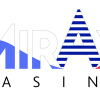I recall it as a fairly easy drive-in to sneak into, and I managed to go unmolested for about a third of the film before a theater employee noticed me sitting and shivering up against a pole in a corner of the lot. 1957: Concession stands generate important revenue, as do “free for children” admission policies (the latter heavily protested by the film industry, which feels this “cheapens” their prestigious product). Admission was $1.25 for adults, $1.00 for students, and children were admitted free. Then children started crying, a slowly rising cacophony as the stillness was broken and parents tried various ways to comfort their increasingly upset charges. 1973: AM radio transmission of movie sound becomes practical thanks to innovations by Cinema Radio, a company started by Fred J. Schwartz to combat poor drive-in audio. I vowed to return as soon as I owned a car, and before long I did have a vehicle (of sorts, an old Rambler) and I was frequenting every outdoor movie screen I could find within safe driving distance of downtown (about 45 miles, given my dicey wheels). Vendors could rent small, lockable storage spaces for $160 to $400 – it’s easy to see how the second-hand biz so thoroughly trumped movie exhibition.
However, Loew’s Theaters (owned by MGM Pictures) convinces a Boston circuit court that a ramp built into the ground isn’t an invention, it’s landscaping, and Hollingshead’s patent becomes unenforceable. “But I felt that the up-and-coming trend in drive-ins is the multi-screened theaters. This was lowered further to $2.00 in 1972, then $2.50 in 1975, to better compete with other area drive-ins. Sero was operating so many drive-ins that the speakers at the Del Mar and elsewhere were actually manufactured specifically for Sero and carried the company’s imprint on the front of their metal casings. Ushers carried collection plates from car to car. The orange-painted bathrooms can be a little dicey, but their snack-bar food is surprisingly edible and affordable. Theater manager David McIntosh said “It’s just a little Podunk theater,” mentioning his impending transfer to another Pacific theater closer to his home in La Habra. In 1962, pastor Richard Huls began holding Sunday church services on the theater lot. THE LEMON BOWL CINEMA DINE opened at the beginning of 1948, San Diego’s second drive-in theater. When it opened on August 24, 1966, it was called the Mission Drive-In, though the name was changed to the Mission San Luis Rey Drive-In and then the Valley Drive-in, presumably to avoid confusion with the Mission DI in San Juan Capistrano.
THE MISSION Drive-In at 30002 Del Obispo Street in San Juan Capistrano was owned by William Foreman’s Pacific Theatres and featured a mural of Mission San Juan Capistrano on the back of its screen, visible from the highway. Sero records show the celebs were flown in to Lindbergh Field, arriving at 4:30 p.m.; they later attended a post-appearance dinner party at the Mission Valley Inn. In 2003, around 90 condo-style homes were built on the property. The Rancho Drive-In’s screen last flickered October 17, 1978. The property was later occupied by a Chevron station, a McDonald’s, and a Cox Communications building. Reportedly, a mere 13 sellers and around 200 buyers showed up for Kobey’s inaugural swap meet on the Midway lot in 1978 —- it eventually grew to be the third-largest outdoor market on the West Coast, attracting around 1000 sellers and over 30,000 shoppers each week. June 1938: Just over a dozen ozones are operating nationwide. It’s just out of control up there… For a short time, there was even a drive-in church service on the lot every Sunday, while sex flicks screened at night, making for quite the eye-catching marquee.
Much to the hysteria of my companions and me (disco-haters one and all, we were there to see Linda Blair’s skimpy outfits). The City Planning Commission actually voted to suspend the Wednesday meets, but the City Council overturned the decision and offered De Anza one more chance. De Anza operations manager Teri Oldknow. Several other early arrivals were playing the music along in their cars, so the whole lot echoed and reverberated to the same sounds, coming from all directions at once, a multisourced auditory experience only attainable on certain drive-in lots, right about at twilight. Megaw in the 1999 Yearbook issue of The Drive-In Theatre Fan Club magazine. This is when Regan Myles and his Regan Group Inc. began running the Aero, though it didn’t take long for trouble to find them. Transformed into a convention-hub for area Volkswagen fans of all ages, the Santee also brought in a replica Herbie car, which was popular for family photo ops (an enterprising photog was usually onsite with a Polaroid, charging $2 per pic). In the early ’60s, the Midway enlarged its screen to 75 feet by 120 feet to better display widescreen Cinema-Scope features. The full-color opening night features were Howard Hughes’ Son of Sinbad, along with the Randolph Scott western Rage At Dawn.





